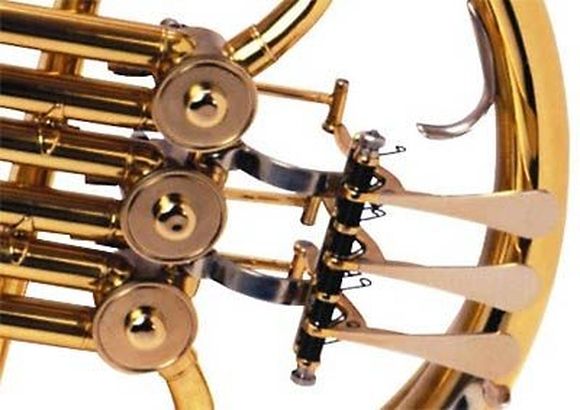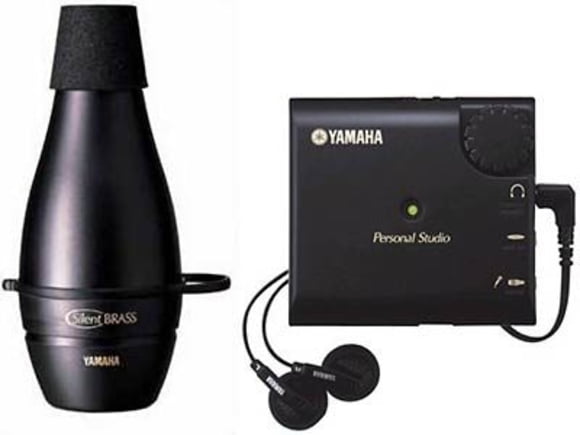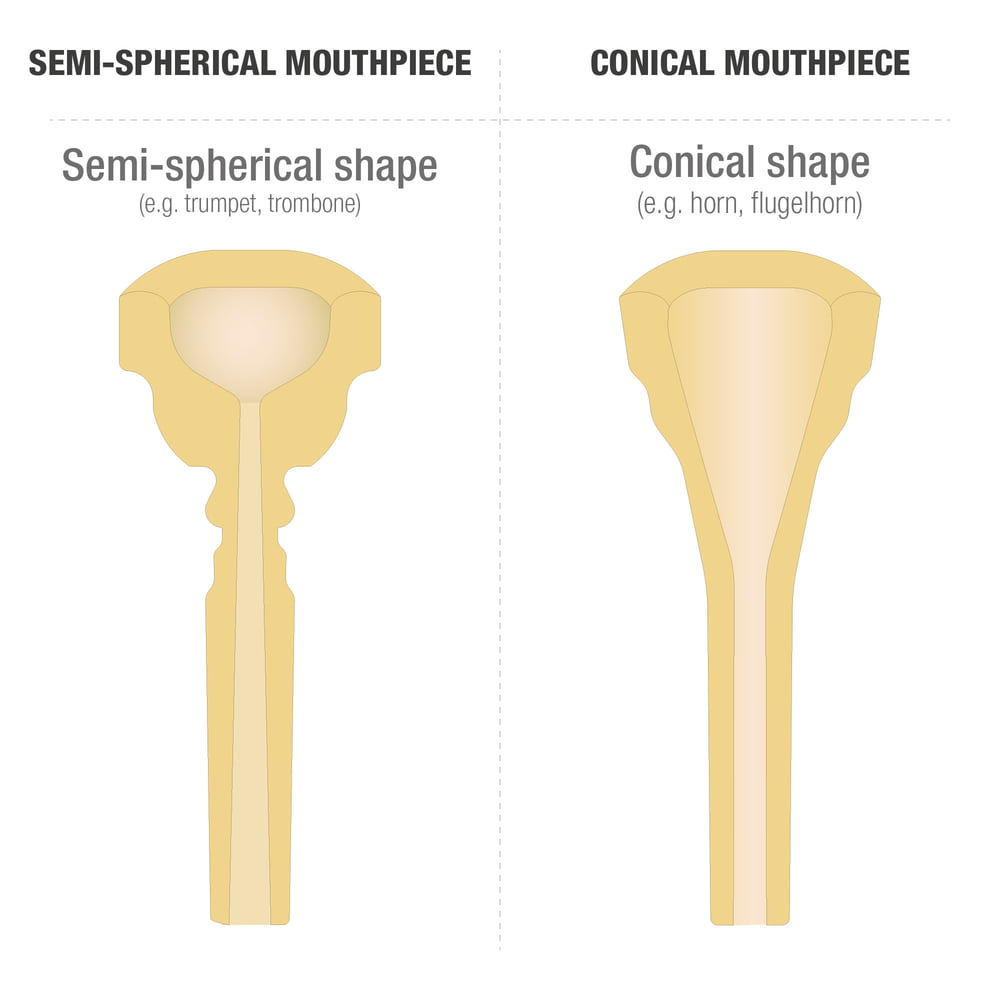7. Signs of quality
Materials, finishes and paints
The metal most commonly used for horns is brass. Some high-quality instruments are made of nickel silver (an alloy of copper and 10–15% nickel), because it’s highly resistant to chemicals. Finishes include clear coat, gold lacquer, silver, gold or nickel.
Nickel, silver and red brass are also used for embellishments. Tin and lead are used for soldering. The material thickness of a horn should be between 0.35 mm and 0.50 mm.
Valves

Rotary valves on horns often have actuators with spiral springs and 3B ball joints.
Accessories
When using a mute, special care needs to be taken to ensure accurate intonation. The Yamaha Silent Brass System is available for the horn, as well. This system makes it possible to practice the horn in an apartment at 4 o’clock in the morning.

Read our online guide to mutes to find out more about mutes.
Mouthpieces
As with other brass instruments, choosing the right mouthpiece is essential. Simply put, it needs to fit like a new pair of shoes.
The diameter of a horn mouthpiece is roughly the same as a trumpet mouthpiece, but it has a much deeper, conical shape. The shape and depth of the ‘funnel’ and the size of the bore all have an effect on the sound.

While experimenting with different mouthpieces, keep in mind: It should be responsive in the low and high registers, without requiring excessive lip pressure.
Thomann carries mouthpieces in all sizes from many leading manufacturers.
Twoja osoba kontaktowa
Lista produktów
Oferty
-
Bb-Waltornie
-
F-Waltornie
-
Waltornie Podwójne
-
Tłumiki do Waltorni
-
Ustniki do Waltorni






